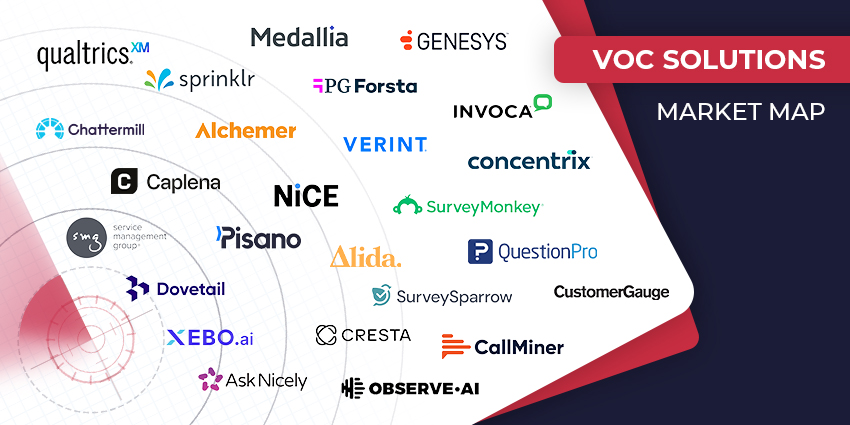I came across the term Customer Success about two years ago, in a company I had just joined, and I thought it was a very positive and exciting idea. Then I discovered what it means in most companies – marketing, driving more revenue from the customer, and perhaps providing some additional technical support. Not so exciting.
I want to change this, to make Customer Success exciting again. I believe there is a place for a true Customer Success approach which really focuses on what is important to the customer, helps the customer to get the best out of products and services, and does everything possible to ensure that the customer succeeds in realising value from their investment.
Let’s look at the purpose of CS, the resources it needs, how CS can be measured, and how to engage the customer and deliver success in their eyes.
The purpose of customer success (CS)
I feel that the purpose of CS should be:
- To set the customer’s expectations, during and after the sale, how CS can help them to realise value: training, best practice, maturity models, and any additional aftersales support
- To build a relationship with the customer, building the customer’s criteria for success into the CS engagement. Every touch point should add value
- To achieve the customer’s goals – whether or not they represent increased revenue for the supplier. This is the customer’s definition of success!
We have talked about the customer being in control for years, and about vendors and service companies becoming trusted partners. It’s time we lived by those words. Customer loyalty comes from trust, from familiarity, from appreciation of the value and reliability of products and experiences – not from extra features and discounts, and certainly not from constant pressure to renew.
Customer loyalty comes from trust, from familiarity, from appreciation of the value and reliability of products and experiences.
What is the ideal result for the customer? This is a core function of CS, and it can only be achieved by building a relationship of trust with the customer.
What is the ideal result for the supplier? We want customers who value our products and services, and can’t imagine doing business without them. That comes from mutual trust and reliance, the foundation for any long-term relationship.
Personalise the relationship. Align with the customer. Expecting them to adapt their processes to a new product is unrealistic. It’s the job of Customer Success to persuade the customer to buy into their own success, to show the value of your product or service, and to build a true partnership with give and take on both sides. When a customer is comfortable that they are achieving their goals, and they see the value which you are contributing to that achievement, CS has fulfilled its purpose.
Preparing for customer success
Customer Success doesn’t just happen – it needs preparation. Many companies work hard to prepare materials and processes and timelines, and then they expect customers to follow these and buy into a vision which they do not share. Instead, I recommend that you prepare Customer Success collateral for use in a flexible way, to suit the needs and preferences of each customer. You don’t want to scare the customer by demanding too much commitment. On the other hand, if the customer wants to move fast, make sure you are ready with a full onboarding package.
Here’s a list of things you should prepare specifically for Customer Success:
- A vision – do you have one, what is it, is it generally known and agreed? The vision for Customer Success should describe what you are trying to achieve. It may also describe what benefits a customer will derive, or what the characteristics of a gold standard customer might be. A vision should make sense both internally and externally, and might be personalised based on e.g. the size of the organisation involved or the products and services they have chosen.
- A value model for the customer – this should match any value promised during the sales process. Customer Success should show the path to that value, and perhaps some additional value along the way. The value model needs to be flexible enough to match the customer’s reality: for example, some customers cannot cut staff numbers, or share data with offshore providers. Like other aspects of Customer Success, the value model should be personalised for each customer, scaled and tailored to their needs.
- A value model for the supplier – it’s also important to know what you expect from the relationship, although you might not share this in detail with the customer. How fast do you expect the customer to progress? What counts as success for you, as well as for the customer?
- A maturity model and metrics – the Crawl>Walk>Run>Fly model is a useful metaphor, and it works. Customers appreciate that they will crawl to start with, and they will need a great deal of help and support until they find their feet. Once they are walking, they may still want you to hold their hand – or they may resist and need to be persuaded. When customers are up and running on their own, the role of Customer Success is more as a coach, improving best practice and perhaps setting new challenges. A customer who is flying will not need your input until they land – but the landing may be bumpy! Know what customers need at each stage, and ensure that they get it whenever possible.
- A training programme – this should relate to the maturity model. It should be clearly described and closely tracked. Some products need little guidance and training, others need a lot, and customers need to be firmly guided to ensure efficiency and success. I have seen customers who want as much training as possible, and customers who want no training at all. The customer is not always right, but it’s not always possible to tell them this. Sometimes you just have to let them put their hand in the fire, and be ready with ice and sympathy. Then again, there are few things worse than telling a customer they need training, and then delivering a course where they see no added value.
- A discovery process – discovery is key to the sales process, but it’s also an important part of Customer Success. Don’t let CS delay sales, but once the customer has signed you need to discover what counts as success for them. Perhaps you are dealing with different stakeholders now, and perhaps the success criteria have changed. Ideally, the success criteria have already been defined, perhaps during a pilot or POC project: these can then be verified with any new stakeholders, and modified as necessary.
- A regular review process – documented success criteria feed into this, and success should be tracked internally. There should be a clear process for carrying out a review, and also an escalation process if success criteria are not being met so that the situation can be reviewed with urgency. Expectations of who will attend the actual review sessions need to be realistic: getting more than three people to a meeting is probably a challenge, and as with everything in Customer Success, these sessions need to be personalized for each customer and add value for each attendee.
Perhaps this preparation for Customer Success is simpler than you thought – or perhaps it looks like a living nightmare. There is a lot of detail, but it boils down to three key points:
- Understand the customer
- Do what is right for the customer
- Document everything. Twice!
We can always learn by listening to the customer. For some suppliers this will be a natural part of doing business.
Measuring customer success
There is a theory that you cannot improve what you cannot measure, and it’s clear that you cannot measure IMPROVEMENT in something you cannot measure – so we really need a way to measure Customer Success if we are going to improve it. We need to measure the customer’s perception of success, and we need to measure the Customer Success team’s contribution.
Measuring the impact of the Customer Success team is the easier of the two, but it must be said that a lot of organisations get this wrong. There are three important things to consider when measuring the impact of your Customer Success team:
- What do you want the outcomes to be? What is the purpose of Customer Success for you?
- What outcomes can the team reasonably influence? Only measure things they can change
- What counts as improvement in the things they can influence? This has to be measurable!
I’m not in favour of agonising about whether an improvement was a direct result of the Customer Success team’s actions – improvement is improvement. I very definitely am in favour of motivating the CS team to ensure that improvement happens. Remember PPPP – Pay Plan Predicts Performance. Set achievable targets, and make sure that they are what you really want to happen.
Success should relate to the purpose of CS: setting customer expectations of the value they would achieve and the steps they would need to take to achieve it, building a relationship with the customer to understand their business and their goals, and achieving specific customer goals so that they can show success.
Setting expectations and agreeing steps: Agree a plan with the customer, based on project deliverables, or on a maturity model for longer term growth, or even on a strategy for automation and transformation of business processes. The objectives and responsibilities should be clearly defined, and there should be target dates for various outcomes such as solution delivery, staff training, and achievement of 50% or 80% or even 100% migration to new processes. These should translate easily into objectives or KPIs for the Customer Success team.
Building a relationship: this is a more subjective measure. Direct customer feedback, by asking explicitly in a questionnaire or making a request for a reference quote, or even just a call between executives, is a good way to get a feel for the customer’s view. Such a direct approach may also strengthen the relationship, and it can provide an opportunity to improve things if there are any problems.
Achieving customer goals: these goals should be part of your Customer Success plan, and you can be pretty sure that the customer is tracking them. If the customer does not feel they have succeeded, then Customer Success has failed, so this is a key metric. Discussing progress with the customer should be an ongoing activity, not just a quarterly review. If your Customer Success team is having these conversations with multiple stakeholders, the chances are the customer will feel that the relationship is successful.
Improvement comes from two things: identifying and fixing issues, and motivating people to do better.
Improvement comes from two things: identifying and fixing issues, and motivating people to do better. For this to be successful, the relevant data and analyses have to be communicated clearly to everyone involved. What went wrong? Why did it go wrong? What needs to change? Too often a customer is lost or is not developed without anyone clearly stating the reasons why. Many companies are good at celebrating and sharing success, but few will devote the same effort to understanding and communicating failure. Customer Success is one area where the reasons for failure should be well known, and where improvement can only come from addressing and learning from failures. I’m not suggesting a blame culture: I am advocating openness, communicating, sharing knowledge in order to improve. Was the customer always going to fail? Was the relationship built with the wrong people? Were expectations wrongly set, or products poorly delivered? Did the customer’s priorities change unexpectedly? The answer is rarely simple, but the questions need to be asked to understand what could be improved. Next, an improvement plan needs to be developed and shared, linked to motivation. And finally, the plan needs to be monitored and the outcomes need to be evaluated. This is the way to measure Customer Success.
Engaging for Customer Success
Everyone wants a piece of the customer – marketing, sales, product and more – so the first question is, who owns the customer post-sale? My suggestion is that this should be Customer Success, but only if you are doing CS properly, and only if there is openness to involve other teams when appropriate. I have two guiding principles for what is appropriate: any engagement should add value for the customer, and it should also advance the relationship in terms of value, maturity, or shared vision.
Everyone wants a piece of the customer – marketing, sales, product and more – so the first question is, who owns the customer post-sale?
Who should you engage? Build a broad relationship across multiple stakeholders and levels of the business. Your sales team should know the budget holders and business owners. Your engineers or service team should be familiar with the customer’s users and operations team. Your execs should at least have spoken with the executive sponsor. Legal, marketing, support and other relationships may also make sense. These are not all required in every case, but a single point of engagement is what Scots call a “shoogly peg”: sooner or later it will lose traction, and then you’ll have no relationship left.
How and when you engage is very much dependent on your processes and your customer’s processes. Here are some examples.
Sales – introduce the concept of CS and a maturity model (crawl > walk > run > fly) during the sales process, introduce somebody from CS, and ask what the customer would class as success. If CS is a big sales advantage, a USP compared to a plug-and-play solution for example, then call it out – but don’t engage more than necessary. CS engagement in earnest should start with onboarding.
Onboarding – CS should own and manage this, and begin the process of customer understanding and discovery. Onboarding is probably the second most important function of CS, and usually the most intensive. Onboarding is about continuing the relationship built up during the sales process, restating your shared goals, handing the customer off to the CS team but also ensuring that the customer introduces CS to all their stakeholders.
Training – CS should lead in drawing up a training plan, and they should track the outcomes against the agreed goals. It is up to CS to explain why this plan has been chosen, how it is unique to this customer, and how it matches their needs to ensure success.
Operations – CS can engage via regular reviews of customer results to demonstrate value, track progress towards customer goals, and agree next steps. This is where CS can bring the most value across a customer lifetime, monitoring progress toward agreed Customer Success targets. Your experience with other customers and your ability to interpret trends in this particular customer’s data should allow you to spot problems early and provide a gentle nudge to correct them.
Support – A good CS team will track tickets, be aware of ongoing issues, and escalate proactively. CS managers and technical experts can act like an additional customer resource to solve problems innovatively while the normal support process works through its analysis, development, testing and release cycles. It is in everyone’s interest to remove obstacles to customer success.
Marketing – use the established CS relationship to present and explain product updates, and measure customer satisfaction without frustrating the customer with unwelcome contacts. Even if CS does not own the customer officially, engaging through that CS relationship can be a very smart move for marketing.
Delivering Customer Success
Delivery needs a plan, it needs a schedule, and most of all it needs a driver. Some of the advice in this article may repeat or elaborate on ideas mentioned in previous blogs – separating delivery from objectives or engagement is not always possible – but this final blog attempts to focus on the process of delivering CS rather than the artefacts or teams involved.
I see four phases in the delivery of CS, some or all of which may repeat.
The first phase begins even before a sale, and lasts at least until the customer is fully onboarded. It involves assigning a single contact in the CS team for every customer, and identifying someone on the customer side who will engage as the main point of contact. This relationship is key, so it’s important to choose the right people where possible – like a good masseur, be prepared to shift the point of contact if it’s not working, and try different approaches until you feel something click. Once things start to loosen up, broaden out your activity – more touch points, different techniques – to build that relationship as deep and wide as you can. Be the delivery driver. Don’t interfere with the sales process, but be present in the discussions and look for someone who is interested in making progress post-sale. The single point of contact should remain in control on both the CS side and the customer side after the sale. Other stakeholders and operational teams, and even marketing or executive sponsors, can be added to the mix so that the customer feels valued, helped, and fully supported in this relationship.
The second phase is to discover what the customer is looking for from the relationship. Always bearing in mind what was contractually agreed, and what goals were articulated or promises made during the sales cycle, it is up to CS to carry out detailed discovery of customer goals and aspirations. New stakeholders may have entered the picture, priorities may have changed, or individuals may be more open about their objectives now that the deal has closed. What does the customer need from you? What are they prepared to contribute in terms of time, resources, engagement? Define what success looks like for the customer, make a plan, get agreement, and work towards these objectives together.
Once the initial objectives are agreed, the third phase is to explain your CS approach to the customer, tell them what they are getting out of the relationship and how you will work to make them successful. Don’t make promises you can’t keep, but do go into all the benefits of working together – levels of training and accreditation, technical and business-level assistance, the experience your team can bring to operations or strategy, the interpretation of reporting data, whatever added value you are able to offer. Relate this to the customer’s goals, and to your contact’s personal targets – saving effort, improving quality, increasing sales, whatever metrics they may be measured by. If you have a good enough relationship, it’s surprising how much the customer will tell you about their own KPIs and aspirations. Helping them to achieve, making them personally successful, is one of the best ways to ensure that they consider the relationship a success.
Don’t forget that the customer should also contribute to this relationship. Whether that’s by making their resources available, by being flexible on timescales, or by meeting commercial targets from the supplier depends on the plan you have agreed. CS should not be a pushover – that’s no way to build a relationship. Engage as equals, state your needs and expectations, bake them into the plan, and make sure the customer delivers on their promises too.
The final phase is operational BAU: review progress regularly, on a schedule to suit the customer, make sure your reviews are aligned with their goals, and perhaps share your own goals so that they are aware of at least some of the ways they can help you. People like to help others, especially when there is something in it for them, and we all know that business is fundamentally about people. CS can be about people too, just as sales and marketing rely on people skills and relationship building.
The bridges built by CS should be used by other teams, so do all of the above in a joined-up way with sales, professional services, support and marketing. Complement each other, but don’t overlap too much. Customers don’t like doing the same thing twice, so someone has to be managing the relationship. In my view this should be CS.
Summary
Who owns the customer after a sale? That is a good question, and the answer depends on your commercial model. Is Sales driven to sell more to existing customers? Is Support measured on the same things as CS? This can be a discussion, and maybe a case-by-case decision, but it needs to be clear to everyone, and the customer should be left in no doubt. Sales, Professional Services, Marketing and others should feed into CS if CS owns the customer relationship.
Whoever owns the customer, and whatever other priorities CS may have, CS is responsible for the customer’s success – the clue is in the name. Every CS contact should add value for the customer, and the customer should understand that value. Avoid situations where your customer asks “Why am I doing this? Why did we have that meeting? What did we achieve in today’s session?” I’ve heard all of these more than once. Be clear and focused, have a plan and driving it forward, and make sure you take the customer with you on the journey. Yes, their success is your objective – but you may need to push them to achieve it. Make it clear what you are offering, and monitor progress towards shared goals. Be equally clear about what the customer has to do on their side. Become part of their thinking, their operations, their objectives – be intrinsic to their success.







